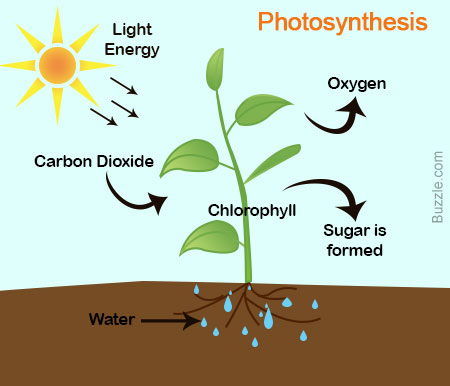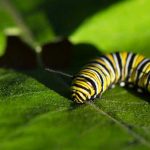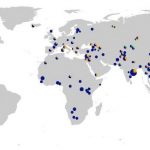Did You Know?
The bacteria involved in chemosynthesis might have been the earliest life-form on planet Earth.
As we all know, living organisms primarily use two methods to generate energy – photosynthesis and chemosynthesis. Both these processes help promote and sustain life on the Earth. In both processes, the energy created is then used to make food. However, the food production mechanism in both methods is not the same. This is because, the energy source as well as the place of occurrence in both is different.
Photosynthesis and Chemosynthesis form our basis of existence on Earth. These processes, that are essentially a series of chemical reactions, help harness energy, which is crucial to maintain almost every form of life on this planet. The following section elaborates more on the differences between these two enzymatic reactions.
Photosynthesis Vs. Chemosynthesis
What is It?

♦ Photosynthesis
This is a process in which plants use light energy to combine carbon dioxide with water. The reaction produces sugar (glucose), which is utilized by the plants for their survival.

♦ Chemosynthesis
This is a process in which bacteria derives energy from the oxidation of inorganic compounds, such as hydrogen sulfide. The energy obtained is used to react carbon dioxide with water, to make sugar.
Chemical Reaction
♦ Photosynthesis
6CO2+ 6H2O-> C6H12O6 + 6O2. Here the sugar formed is represented by the chemical formula C6H12O6.
♦ Chemosynthesis
6CO2 + 6H2O + 3H2S->C6H12O6 + 3H2S
Where it Occurs?
♦ Photosynthesis
It usually occurs above sea level, but also takes place in plants that are up to 100 m deep in the ocean. The leaves are the main site where photosynthesis occurs.
♦ Chemosynthesis
It occurs thousands of meters deep in the sea; at the sea floor or the ocean basin, usually in close proximity of hydrothermal vents that contain high amounts of hydrogen sulfide. These hydrogen sulfide bonds are broken down to obtain energy. Also, unlike photosynthesis, this process takes place in harsh conditions, at extreme temperatures and high water pressure of the ocean floor.
Energy Used
♦ Photosynthesis
This process is driven by adequate sunlight. It also means that the process does not occur at night.
♦ Chemosynthesis
The process takes place without the help of any light source. The oxidation reactions of inorganic compounds release a substantial amount of energy which assists to fuel this process.
Organisms
♦ Photosynthesis
Photosynthetic organisms such as plants and algae (cynobacteria) play a key role in capturing light energy.
♦ Chemosynthesis
Deep-sea creatures such as shrimp, crab, fish, and big tube worms, that live in the darkest regions of the ocean, depend on chemosynthesis for survival. In fact, over 300 species of marine life thrive near these hydrothermal vents. Chemosynthetic bacteria, that oxidize hydrogen sulfide to derive energy, reside in these creatures.
Process Rate
♦ Photosynthesis
Atmospheric temperature, amount and intensity of sunlight falling on the leaves, and CO2 concentration influence the rate of photosynthesis.
♦ Chemosynthesis
The amount of hydrogen sulfide seeping in from the hydrothermal vent determines the rate of chemosynthesis.
Byproducts
♦ Photosynthesis
In photosynthesis, where light energy is used to combine water and carbon dioxide, it releases oxygen as a byproduct.
♦ Chemosynthesis
In chemosynthesis, sulfur compounds are generated as byproducts.
As far as the similarities are concerned, although chemosynthesis and photosynthesis derive energy from different sources, both these processes produce glucose (sugar), which serves as food for both plants as well as animals. Moreover, inorganic substances are used in both these processes to obtain energy and produce food.











RSS